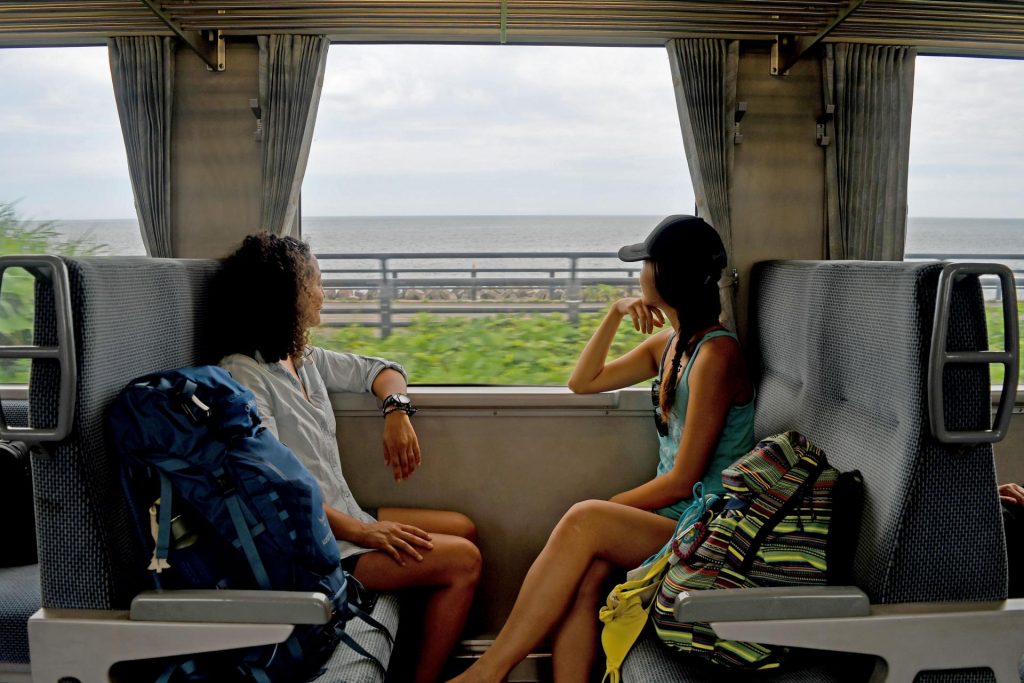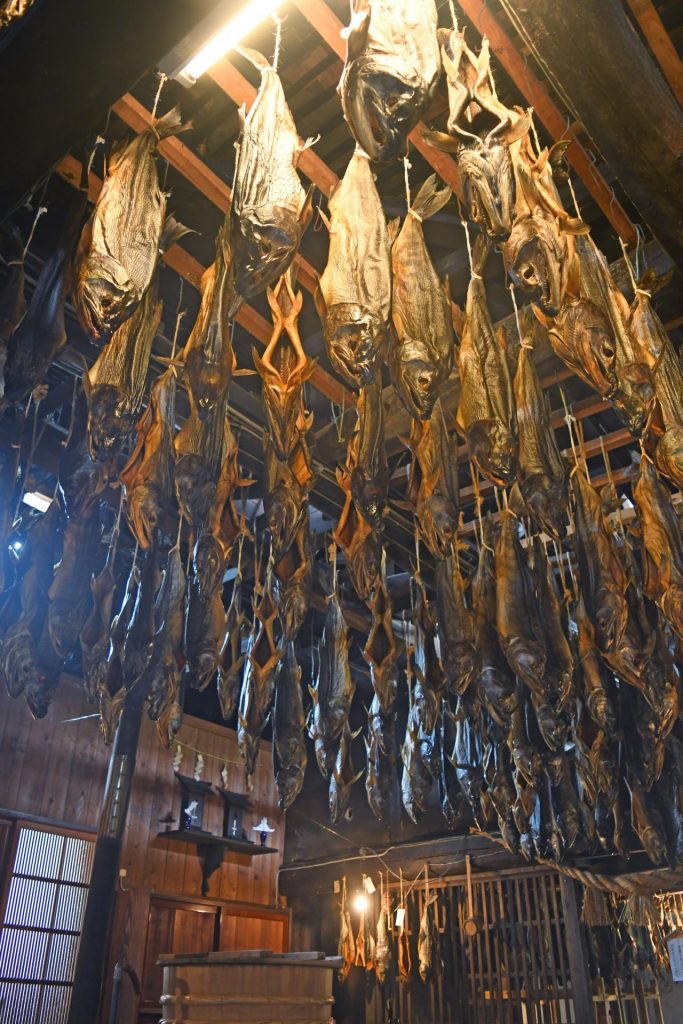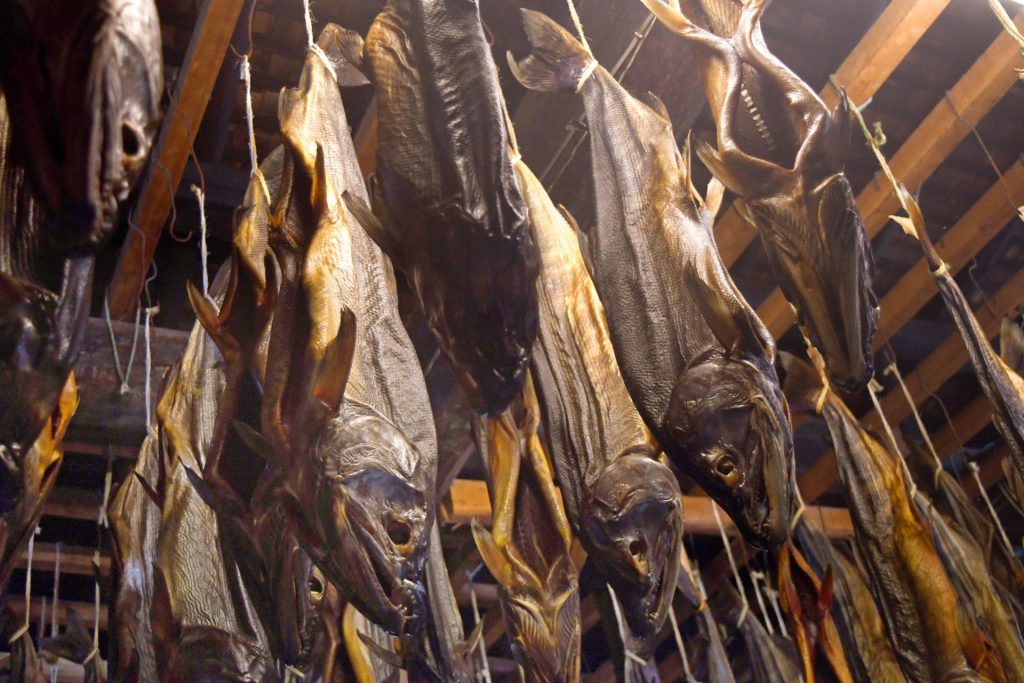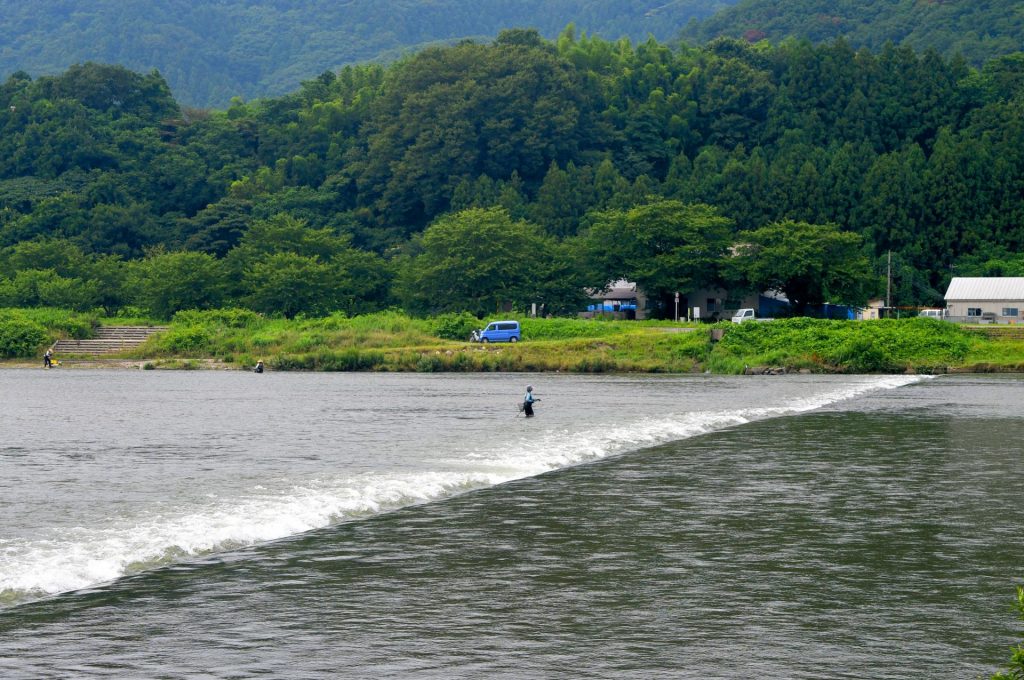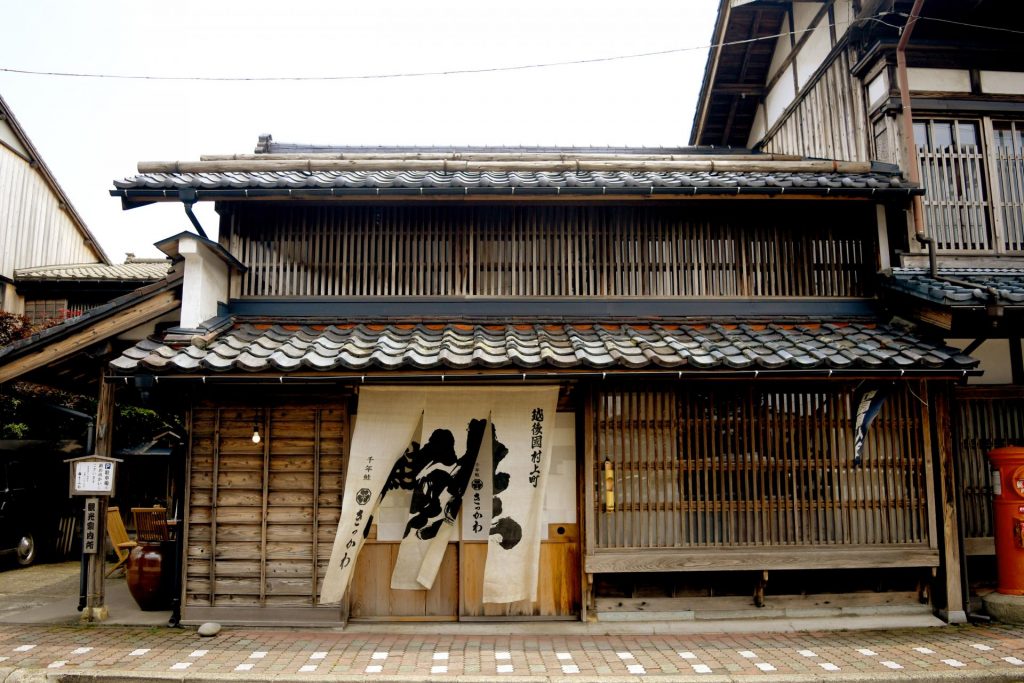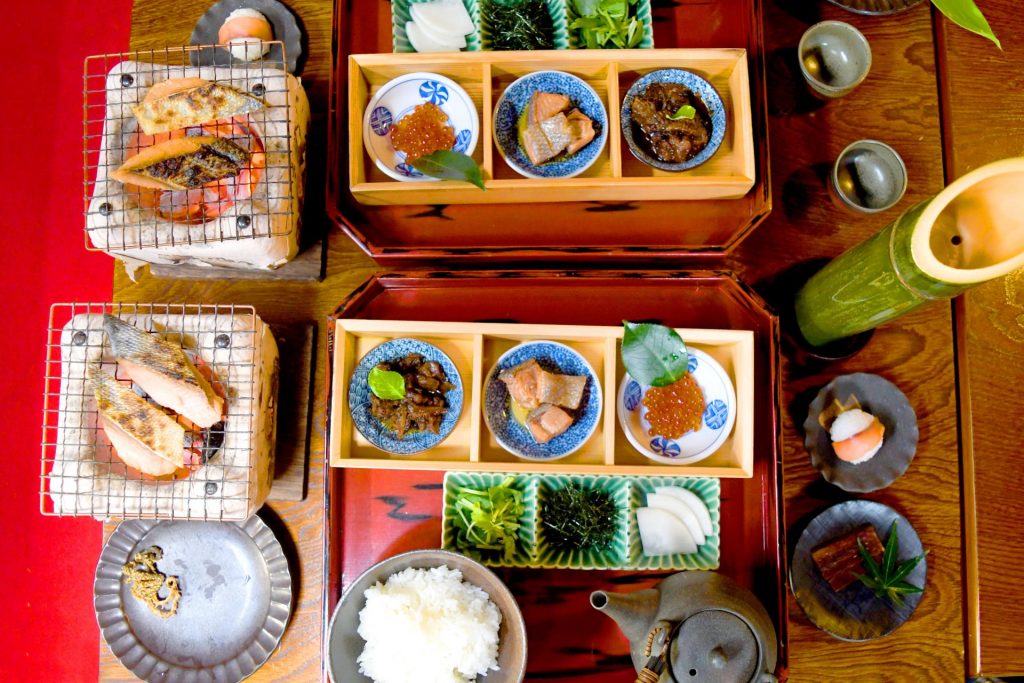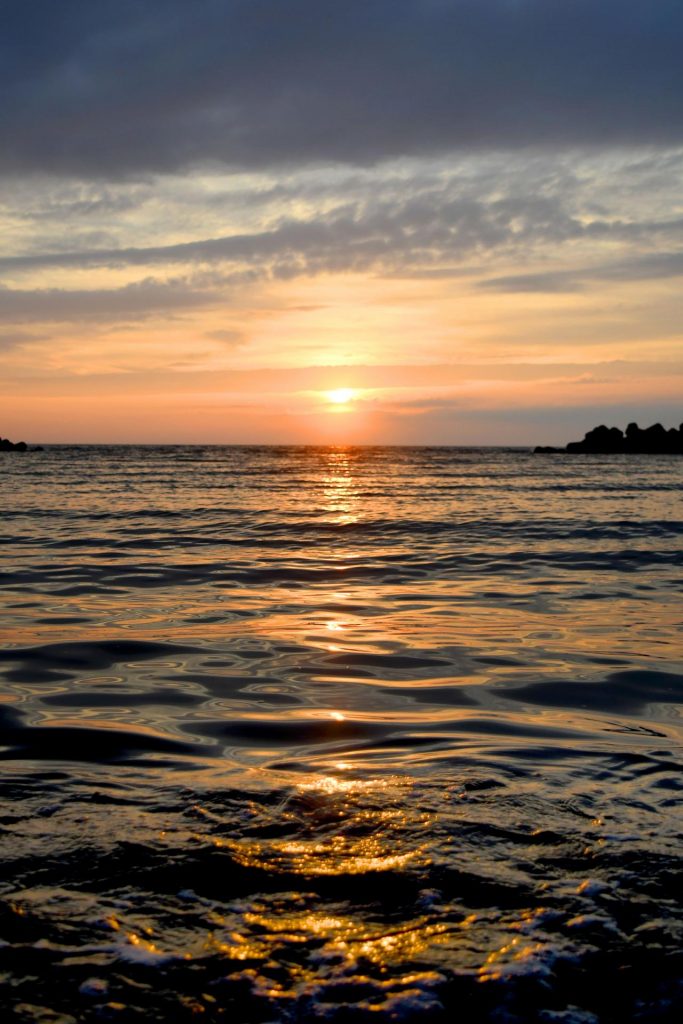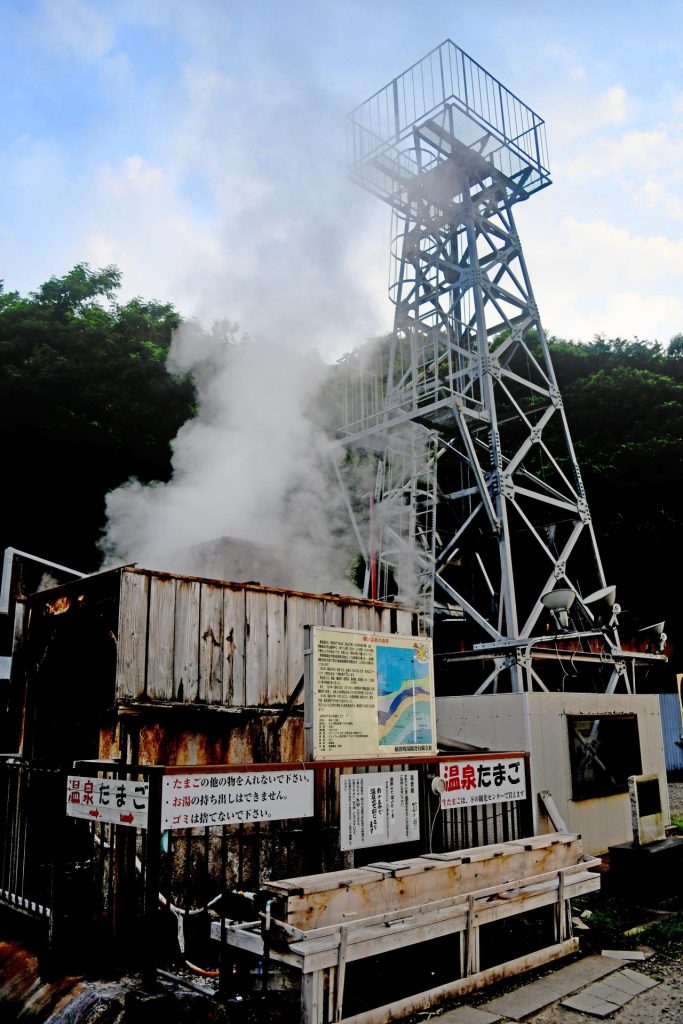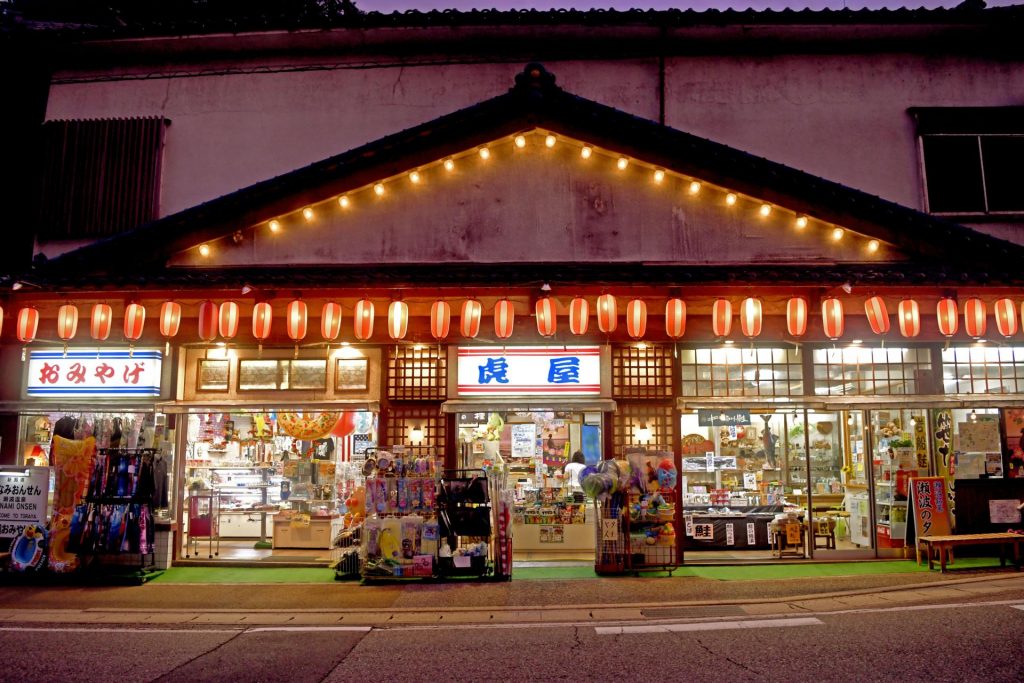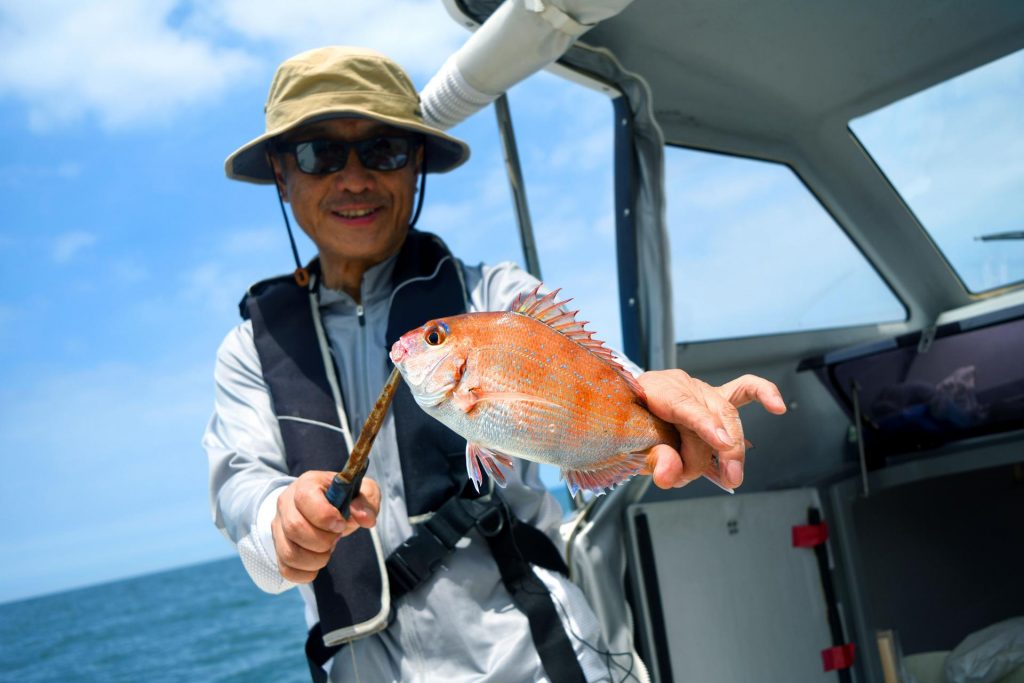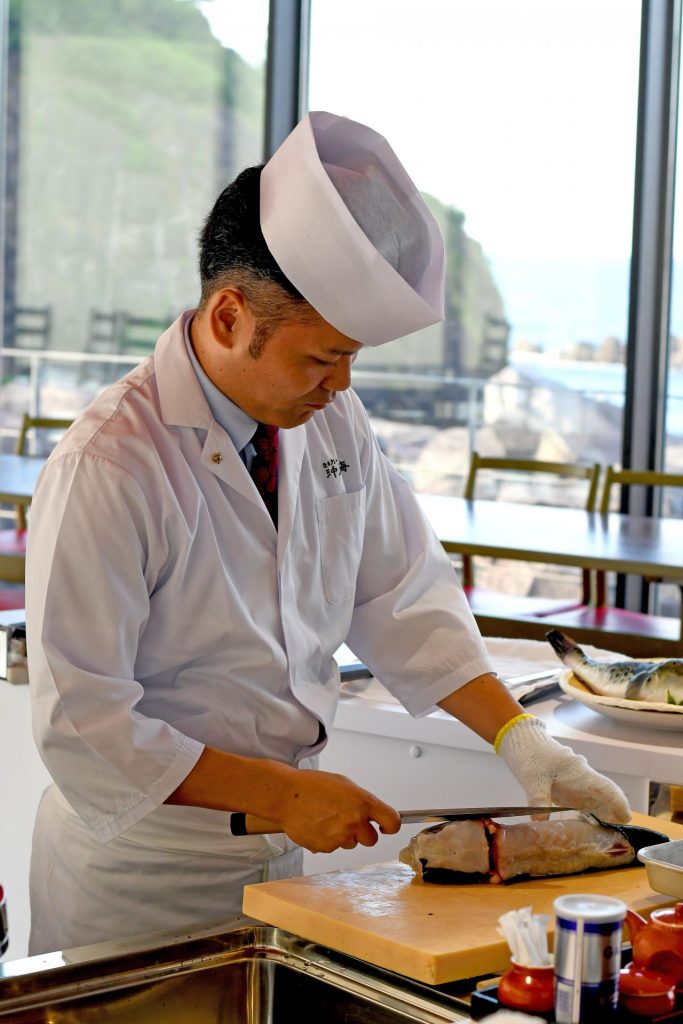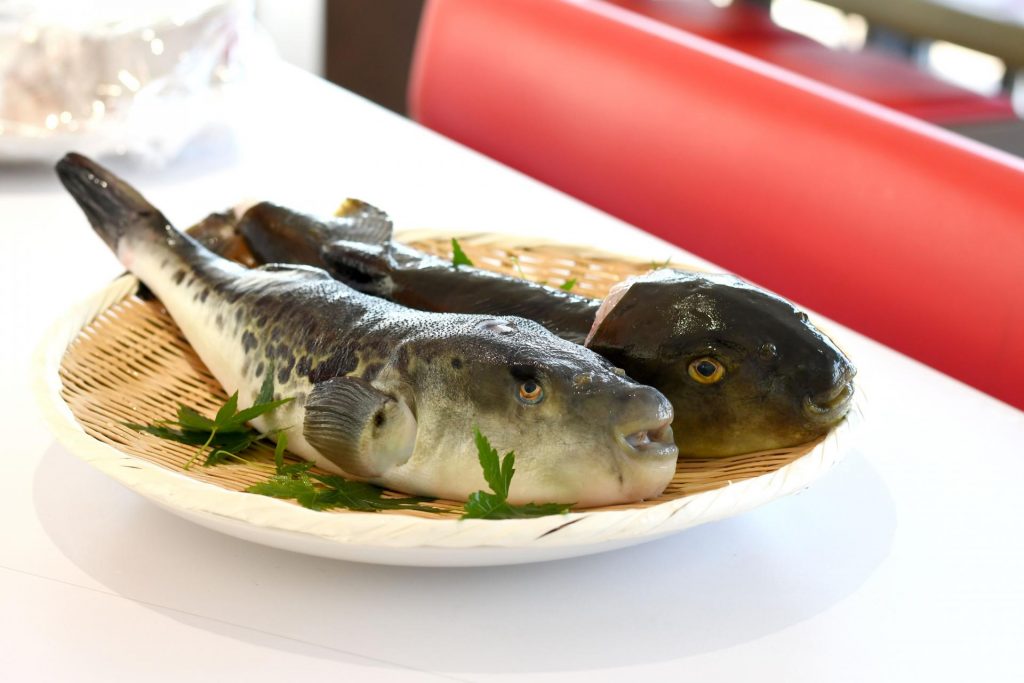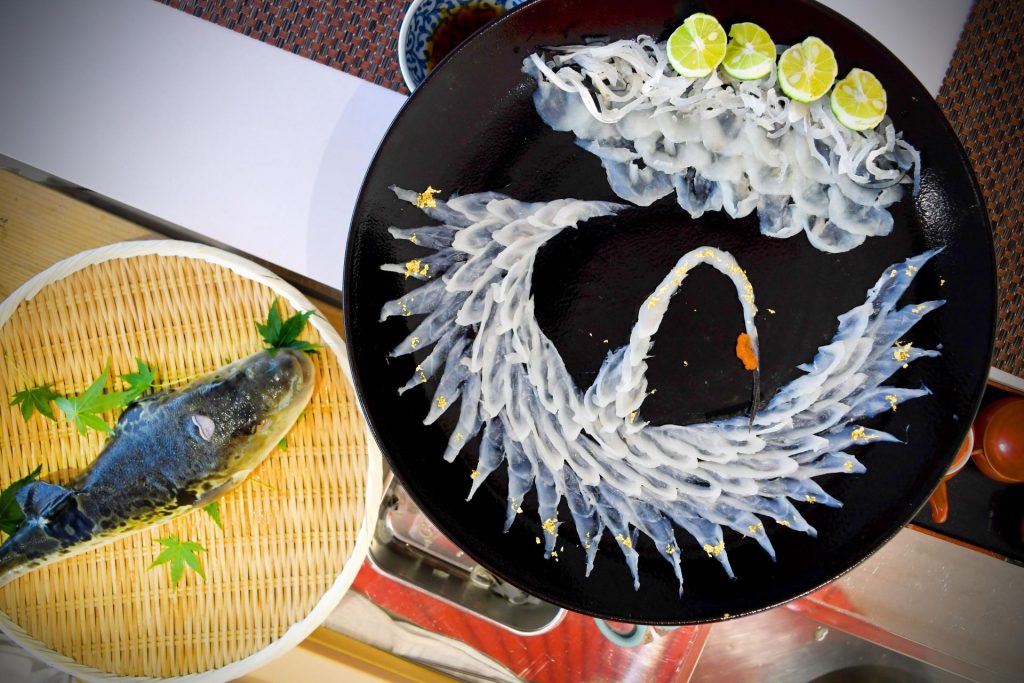One of the best things about traveling through Japan is the scenic train rides that duck into tunnels and emerge into mountainous landscapes, idyllic rice paddies and dramatic coastlines. The Uetsu Line, which starts at Niigata Station, is a laidback way to get to the sights and flavors along the Sea of Japan. Stations along the line are great starting points to jump off, rent a car and explore Japan’s great northwest, where sacred mountains meet rustic coastlines dotted with fishing villages and hot spring towns.
MURAKAMI KINGS
As you step out of Murakami Station, you’ll notice 70-centimeter-long dried sake (salmon) hanging tail up from awnings. This may look grisly at first glance, but seafood lovers will not want to miss the food culture here.
Salmon, or iyoboya (the “king of fish” in the local dialect), shaped Murakami’s history. For hundreds of years, the caught fish were a source of income, providing tax revenue for emperors and feudal lords, serving as New Year traditional gifts and paying for homes and schools.
In the early 1700s, the castle town of Murakami went through an economic slump as overfishing and habitat destruction ruined the salmon harvest. However, an enterprising samurai, Aoto Buheiji, studied the Miomote River to find ideal locations for salmon to spawn and came up with tanegawa-no-sei, a controversial conservation system to aid salmon spawning. He designated optimal sections of the river as protected spawning areas to not only guide the fish but to prevent poaching. The river was divided into channels where fishermen were allowed to catch salmon ascending a particular section. People also needed special permission to harvest eggs.
As most close-knit communities go, the locals were initially angered by this new reform and the assumed lack of freedom that came with it. Thankfully, the government supported Buheiji’s plan and the salmon returned in great numbers, making Murakami prosperous again. Today, the Miomote River boasts Japan’s first artificial salmon hatchery. The river is bustling in mid-October to the end of November during fishing season: approximately 10,000 salmon are caught here per year. Cast net fishing starts from around Oct. 21 to Nov. 30 while fly fishing starts from November to the beginning of December.
More than 100 traditional ways to prepare salmon have been passed down in Murakami, with shiohiki-sake (salmon salting) being the most common. Following a 1,000-year-old tradition, the salmon is carefully hand-rubbed with coarse salt then air dried to be exposed to the Sea of Japan’s powerful winter wind. The locals are careful not to open the entire belly of the salmon when gutting the fish, as this is associated with harakiri (a samurai’s honorable suicide). You can participate in this tradition at the annual shiohiki workshop at Iyoboya Salmon Museum held from late November to the beginning of December.
Air drying the salmon is a common household sight during the New Year, but the sight of a 1,000 salmon hanging from the ceiling in the Sennenzake Kikkawa salmon store is an impressive sight. Founded in 1626, Kikkawa leaves the salmon hanging for a year to enhance flavors, which you can enjoy at their nearby restaurant, Izutsuya.
SUNSETS, SURF AND ONSEN TOWNS
Japan may be known as the Land of the Rising Sun but the sight of the sun setting beneath the Sea of Japan as you travel along the west coast is also stunning. Just a 10-minute drive from Murakami, Senami Onsen in Niigata is a sleepy hot spring resort built right on the coast. The area is dotted with Showa Period ryokan (inns), free ashiyu (foot baths) and hot springs spouting boiling water at about 90 degrees.
Yunohama Onsen just across the border in Yamagata Prefecture is officially recognized as a place to view one of Japan’s 100 most beautiful sunsets. It is also called Kame no Yu (turtle hot spring) as a legend from the Tengi Era (1053-1058) says a fisherman found a washed up, injured sea turtle here. For seven days it rested on the shore, healed by hot springs flowing through the sand.
Surfing in Japan is said to have started here. In the Edo Period, a haiku poet recorded seeing local youth riding waves on senoshi boards (makeshift surfboards taken from a wooden boat’s removable floor). In the 1900s, people started bodysurfing here and in the autumn of 1960, it hosted a commemorative Memorial Cup surfing contest to celebrate this area as the birthplace of Japanese surfing.
Related Links
Taikanso Senami-no-Yu Ryokan
Sea Rover Surf Lessons and Rentals
MOUNTAIN PRIESTS AND LOCAL EATS
Tsuruoka is a deeply spiritual region famous for yamabushido—Japanese mountain asceticism that dates back to the 7th century. To become a yamabushi (mountain priest), one must go through a week-long intensive training in the mountains.
“I came back from Tokyo because I loved the nature here so much,” says Yukio Mizuno, a yamabushi who also works as a nature guide. After graduating from university in Tokyo, he returned to Yamagata to live in his hometown of Tsuruoka. “Here, the mountains, rivers and oceans are so close to each other. There’s always some outdoor activity in every season.”
As this region has become quite popular with foreigners wanting to try yamabushi training, Mizuno organizes short-term stays which include a one-day course, staying with a local yamabushi, mountain vegetable foraging and cooking shoujin ryori (traditional vegetarian cuisine prepared by Buddhist monks).
Tsuruoka was designated as a UNESCO Creative City of Gastronomy site in 2014. Here, you can taste freshly caught fugu (pufferfish). Fugu is an incredibly poisonous fish (even touching some of its guts can be deadly) and can only be prepared by the top fugu chefs who undergo years of training. More than 90% of fugu in Japan is farmed, and of the remaining 10% that is wild, 70% is caught in Shonai (the region that includes Tsuruoka and Sakata further north).
As if eating pufferfish isn’t enough, travelers can participate in a unique experience: a fugu preparation workshop at Kamo Aquarium. Chef Takeshi Suda is one of the most famous chefs in Yamagata, known for his artistically designed fugu dishes.
Suda utilizes a special technique where he drains the blood of freshly caught fish and removes its nerves while it is still alive. This way, raw fish is kept fresh for a significantly longer period of time than if it were prepared normally, and will taste like it was just caught even up to a week later.
Related Links
Yura Onsen Yaotome Ryokan
The Hidden Japan Tours
GETTING THERE
From Tokyo, take the Joetsu Shinkansen (two hours) to Niigata Station then transfer to the JR Uetsu Line to Murakami Station (50 minutes). Rent a car ahead of time so you can access Senami Onsen and Kikkawa easily (there’s a Nippon Rent-a-car branch outside Murakami Station) as taxis can get expensive.
It takes a little over an hour and a half on the Uetsu Line from Murakami Station to Tsuruoka Station. Unless you’re joining a tour, it’s recommended to rent a car here as well so you can access various beaches or go up to the mountains.
Starting October 2019, the new JR Kairi train will connect Niigata to Sakata via the Uetsu Line. This luxurious train has reclining seats with expansive window views, an event space and a dining area serving meals prepared by a local chef. Check online for pricing details.





